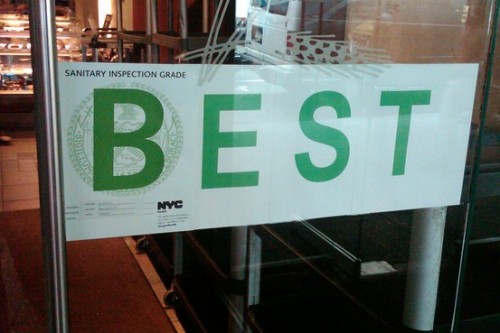Yesterday, Michele Obama announced that as part of her Let’s Move! initiative Darden’s, the restaurant chain that owns Olive Garden, Red Lobster, LongHorn Steakhouse, The Capital Grille, Bahama Breeze, and Seasons 52, would be making its meals a bit healthier.
As I explain below, I have a personal interest in this announcement.
According to the White House press release, the Darden’s commitment includes:
Kids’ Menus – changes starting now and to be fully implemented by July 2012. Darden’s will:
- Add a fruit or vegetable as the default side for every kids’ menu item at those restaurants offering a default side on the children’s menu: Bahama Breeze, LongHorn Steakhouse and Red Lobster.
- Make 1% milk the default beverage.
- Make milk prominently promoted on the menu and available with free refills.
- Illustrate healthy choices for meals and drinks on menus.
- Display healthier menu options more prominently, when possible.
- Not display carbonated beverages on children’s menus.
- Improve the nutritional content of one or more children’s menu items to provide equal or less than 600 calories, 30% of total calories from fat, 10% of total calories from saturated fat, and 600 mg of sodium.
Calories/Sodium Footprint Reduction – changes to be implemented by 2016 and 2021
- By 2016, reduce calories by 10% and over a ten-year period by 20%.
- By 2016, reduce sodium by 10% and over a ten-year period by 20%.
My personal interest: In 2005, I was invited to Amelia Island, Florida, to give a talk to the CEO’s of popular restaurant chains, among them Clarence Otis, Jr., the CEO of Darden’s. I was specifically asked to discuss what restaurant chains could do to lessen the impact of childhood obesity.
In my talk, I told the group that they could help alleviate childhood obesity by:
- Making healthy kids’ meals the default. Parents could still order junk food, but the default meal should be healthy.
- Providing a price incentive for choosing smaller portions.
- Stopping any funding of the Center for Consumer Freedom and hiding behind its tactics.
The reaction? The CEOs went ballistic: “you are trying to put us out of business!”
No, I simply hoped they would consider making it easier for customers to make healthier choices.
Seven years later, Mrs. Obama has put these chains on notice that they are part of the problem of childhood obesity and must change their practices. Darden’s has admitted that it bears some responsibility for contributing to childhood obesity and is making some grudging changes. Others are likely to follow.
It’s a step. Now let’s make sure they follow through.
For more details, see the AP story. For many more details, see what Obamafoodorama has to say (I’m quoted).


